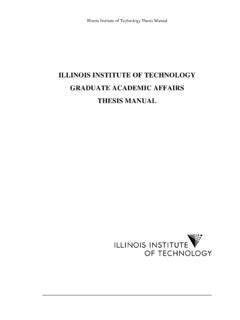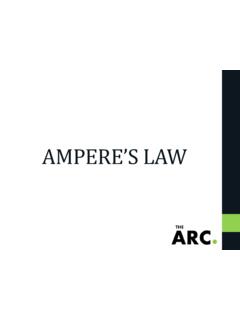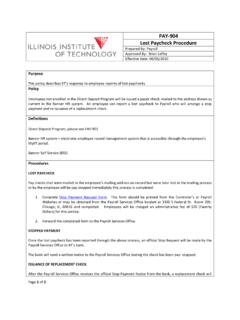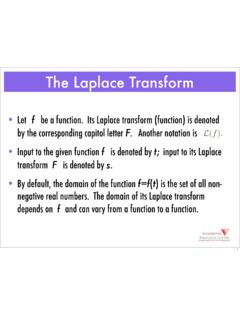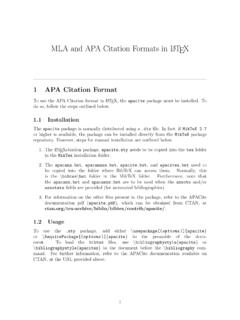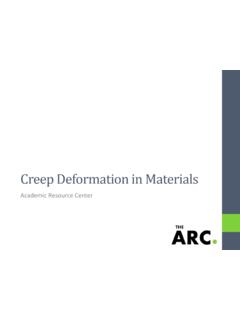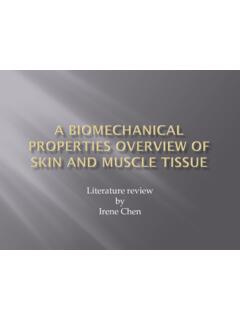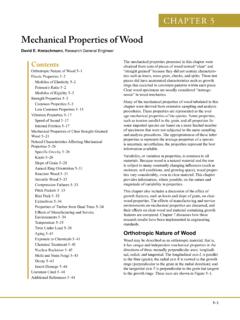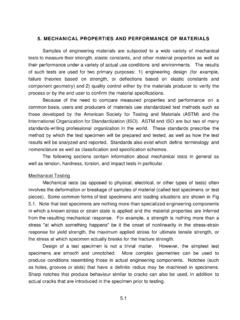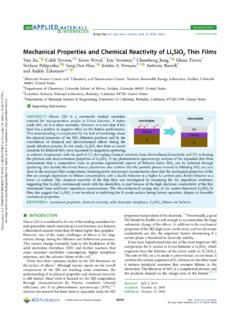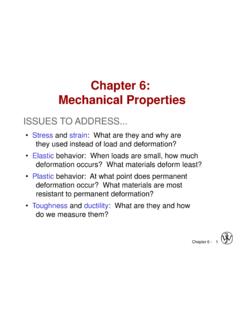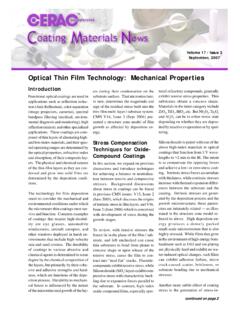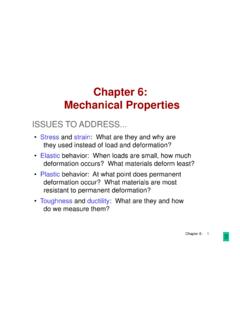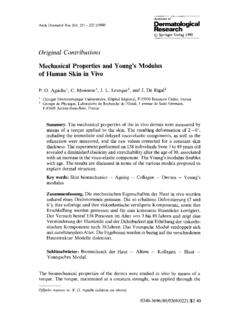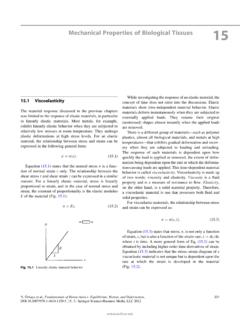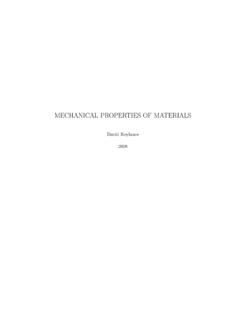Transcription of Mechanical Properties of Biomaterials
1 Mechanical Properties of Biomaterials Academic Resource Center Determining Biomaterial Mechanical Properties Tensile and Shear Properties Bending Properties Time dependent Properties Tensile and Shear Properties Types of forces that can be applied to material: a)Tensile b)Compressive c)Shear d)Torsion Tensile Testing Force applied as tensile, compressive, or shear. Parameters measured: Engineering stress ( ) and Engineering strain ( ). = F/A0 : Force applied perpendicular to the cross section of sample = (li-l0)/l0: l0 is the length of sample before loading, li is the length during testing. Compression Testing Performed mainly for Biomaterials subjected to compressive forces during operation. orthopedic implants. Stress and strain equations same as for tensile testing except force is taken negative and l0 larger than li.
2 Negative stress and strain obtained. Shear Testing Forces parallel to top and bottom faces Shear stress ( ) = F/A0 Shear strain ( )= tan ; is the deformation angle. In some cases, torsion forces may be applied to sample instead of pure shear. Elastic Deformation Material 1: Ceramics Stress proportional to strain. Governed by Hooke s law: = E; =G E :Young s modulus G: Shear modulus - measure of material stiffness. Fracture after applying small values of strain: ceramics are brittle in nature. Elastic and Plastic deformation. Material 2: Metal Stress proportional to strain with small strain; elastic deformation. At high strain, stress increases very slowly with increased strain followed by fracture: Plastic deformation. Elastic and Plastic deformation. Material 3: Plastic deformation polymer Stress proportional to strain with small strain; elastic deformation.
3 At high strain, stress nearly independent of strain, shows slight increase: Plastic deformation. Elastic and Plastic deformation. Material 4: Elastic polymer Stress increases very slowly with increasing strain. Do not fracture at a very high strain values. Plastic deformation Plastic deformation occurs at point where Hook s Law is no longer valid, end of elastic region. Stress at this point is called yield strength ( y) and stain is called yield point strain ( yp). Further stress increases with strain up till a maximum point M, called Ultimate tensile strength ( uts). With further increase in strain, stress decreases leading to Fracture. Engineering vs. True Stress-strain True stress ( t) = force divided by instantaneous area t = F/Ain True strain t=ln(li/l0) Stages of Plastic Deformation a)Lamellar and amorphous regions of polymer interact in response to tensile forces.
4 B)Stage 1: chains extend and lamella slide past each other. c)Stage 2:Lamella re-orient so that chain folds align along the axis of loading. Stages of Plastic Deformation d) Stage 3: Blocks of crystalline phases separate, adjacent lamella still attached to each other through tie molecules. e) Stage 4: Finally blocks and tie molecules become oriented along the axis of applied tensile forces. Bending Properties Helps in calculation of: Stress required to fracture the sample or Modulus of Rupture (also called flexural strength). mr = 3 FfL/2bd^2 Time Dependent Properties CREEP: Defined as plastic deformation of sample under constant load over time. Creep at 37 deg C a significant concern for biomedical applications. Failure of Polymer ligaments. Creep Molecular Causes of creep: Metals: Grain boundary movement, vacancy diffusion Ceramics: little or no vacancy diffusion Polymers: viscous response in amorphous regions.
5 Creep is function of crystallinity: As % crystallinity increases, creep decreases. Creep curve 3 distinct regions: Primary creep: increase in strain with time; creep rate decreases. Secondary creep: linear relation between creep strain and time. Tertiary creep: Leads to fracture. QUESTIONS OR SUGGESTIONS? Contact: BME Table, Academic Resource Center
